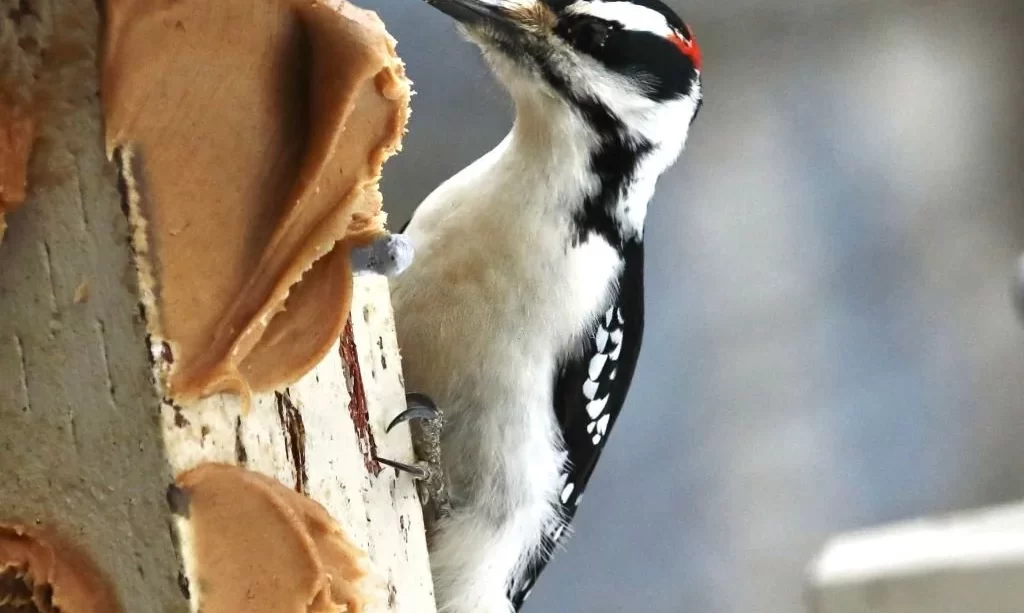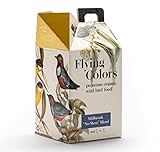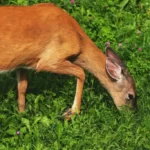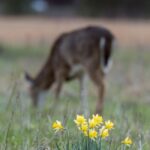Peanut butter, with its creamy texture and rich, nutty flavor, has secured a permanent place in the hearts and pantries of many. A beloved staple in human diets, this spreadable delight finds its way onto sandwiches, into cookies, and even serves as a tasty snack on its own. But beyond its role in our culinary adventures, peanut butter has also captured the attention of our feathered friends—birds. In this article, we delve into the fascinating world of avian appetites to answer a burning question: Can birds eat peanut butter? As we explore the potential benefits and considerations of offering this nutty treat to our avian companions, we’ll discover the delicate balance between providing a delightful indulgence and ensuring the well-being of our feathered neighbors.
The Allure of Peanut Butter
Before we dive into the realm of birds and peanut butter, let’s take a moment to appreciate the allure of this culinary creation. Peanut butter, often hailed as a comfort food, is renowned for its smooth or crunchy textures and the delightful contrast of salty and sweet flavors. It has been a cherished component of human diets for generations, serving as a versatile ingredient in sandwiches, desserts, and savory dishes alike.
However, what makes peanut butter particularly intriguing in the world of bird feeding is its energy-rich composition. Packed with fats, proteins, and essential nutrients, it provides a concentrated source of sustenance that can be especially appealing to birds, especially during periods when natural food sources may be scarce.
Birds and Their Dietary Needs
Birds, with their remarkable diversity, exhibit a wide range of dietary preferences and requirements. From seed-eating sparrows to insect-hunting warblers, each bird species has evolved to meet its nutritional needs in specific ways. This diversity extends to the types of food they seek, which can include fruits, seeds, insects, nectar, and more.
Understanding the dietary needs of birds is crucial for those who enjoy observing and feeding them. Different birds have different energy requirements and nutrient preferences based on their size, physiology, and behavior. As bird enthusiasts, it’s our responsibility to provide a well-rounded diet that meets these needs and contributes to their overall health and well-being.
With this understanding as our foundation, we embark on the exploration of whether peanut butter aligns with the dietary needs of our avian companions, or if it presents certain risks and considerations that merit a closer examination.
Can Birds Eat Peanut Butter?
The question of whether birds can safely enjoy peanut butter has captured the curiosity of many bird enthusiasts. The answer is nuanced and depends on several factors.
Peanut butter, being energy-dense and rich in fats and proteins, can indeed be a beneficial addition to a bird’s diet, particularly during the colder months when high-calorie foods are in demand. Many birds, such as chickadees, titmice, and woodpeckers, readily accept peanut butter as a treat.
However, there are essential considerations to bear in mind. Pure, unsalted, and unsweetened peanut butter is preferable, as additives like salt and sugar can be harmful to birds. Furthermore, moderation is key. Peanut butter should be offered as an occasional treat rather than a primary source of nutrition.
Risks and Concerns
While peanut butter can provide valuable energy and nutrients, it does come with certain risks and concerns when fed to birds:
- Stickiness: Peanut butter is inherently sticky, and birds may inadvertently get it stuck to their feathers or beaks. This can impede their ability to fly, preen, or feed naturally. To mitigate this, it’s advisable to offer peanut butter in ways that minimize contact with feathers, such as using specialized peanut butter feeders or mixing it with other bird-friendly ingredients.
- Risk of Choking: Birds, especially smaller species, can be at risk of choking if they consume large chunks of peanut butter. To prevent this, ensure that the peanut butter is spread thinly or mixed with other foods to create a more manageable consistency.
- Potential Allergens: Some peanut butter brands may contain additives or cross-contaminants that could be harmful to birds. Always choose a high-quality, pure peanut butter without added salt, sugar, or artificial ingredients. It’s also essential to consider potential nut allergies in your local bird population.
- Spoilage: Peanut butter can spoil in warm and humid weather, leading to bacterial growth. Regularly clean and replenish feeders containing peanut butter to maintain a safe feeding environment.
In summary, while birds can indeed eat peanut butter, responsible feeding practices are vital to ensure their safety and well-being. Opt for pure, unsalted peanut butter, offer it in moderation, and employ feeding methods that minimize stickiness and choking hazards. By doing so, you can provide a delightful treat for your feathered visitors while keeping their health and comfort in mind.
Safe Ways to Offer Peanut Butter to Birds
Ensuring the safe consumption of peanut butter by birds involves thoughtful feeding methods:
- Use Peanut Butter Feeders: Specialized peanut butter feeders are designed to dispense peanut butter in a way that minimizes contact with feathers and reduces stickiness. These feeders often come with grids or grooves that allow birds to access small amounts of peanut butter without getting it all over themselves.
- Thin Spread or Mix: When offering peanut butter, consider spreading it thinly on surfaces or mixing it with other bird-friendly ingredients. Creating a spreadable mixture can help prevent birds from ingesting large, sticky chunks and reduces the risk of choking.
- Choose the Right Time: Peanut butter is particularly valuable during the colder months when birds need extra calories to maintain their energy levels. Offering it sparingly during these times can be especially beneficial.
- Clean Feeders Regularly: Maintain cleanliness by regularly cleaning peanut butter feeders to prevent spoilage, mold growth, and the buildup of old, sticky residue.
Bird-Friendly Alternatives
While peanut butter can be a delightful treat for birds, it’s not the only option available. Several bird-friendly alternatives can provide similar benefits without some of the associated risks:
- Suet: Suet cakes or blocks made from rendered animal fat, mixed with seeds, nuts, or dried fruits, are excellent high-energy choices for birds.
- Mealworms: Offering dried mealworms or live mealworms can be particularly attractive to insect-eating birds such as bluebirds and robins.
- Nut Mixes: A variety of nuts, such as shelled and unsalted peanuts, almonds, and cashews, can be provided in moderation as a source of protein and healthy fats.
- Sunflower Seeds: High-quality sunflower seeds are a favorite among many bird species and can be offered in feeders specifically designed for them.
- Fruits: Fresh or dried fruits, like apple slices, raisins, or grapes, can be placed in bird-friendly feeders to attract fruit-eating birds.
- Mess Free Bird Seed – Our premium organic bird seed blend is made for bird enthusiasts who don’t like to deal with hulls & seed remnants. Our Millbrook No-Mess bird feed blend is our very own mix of healthy nuts & seeds with hulls removed, so there’s never any mess from empty shells in your feeder or on the ground to worry about. Our bird food is comprised of sunflower hearts, peanut hearts, and millet hearts.
- All Natural, 100% USDA Organic & Non-GMO Ingredients – Our farm-harvested seeds & nuts are grown without toxic chemicals, pesticides, or insecticides. Feel confident knowing you are providing bird food for outside wild birds that will be as clean, healthy and as natural as their environment.
- Scientifically Backed Creations with Zero Fillers – We source the best ingredients birds love, test the nutrients with a lab, confirm nutrition levels with biologists, and never use wasteful fillers. We don’t let any twigs, stones, or moldy seeds get into our batches (unlike most other brands) and ensure every ingredient perfectly balances with each other in our no waste bird seed.
- Handcrafted in Small Batches – Every batch is blended, packaged, inspected, and numbered by hand in New York’s Hudson Valley. Our pure & wholesome recipes are lab-tested and biologist-approved to attract and nourish a wide variety of wild birds and can be used in any feeder style and all seasons. Whether you need premium winter bird seed or summer time wild bird feed for migratory birds, our waste free bird seed will get birds flocking to your feeder.
- Convenient & Sustainable Packaging – Each easy-pour recyclable cardboard carton contains 15 lb. of 100% USDA Certified organic wild bird seeds & nuts. We designed the carton ourselves and worked with a paper engineer to ensure optimal storage capacity of ease of use to pour our wild bird seed for outside feeders without spill.
Conclusion
In the grand tapestry of nature, offering peanut butter to our feathered friends is a gesture of care and a source of delight for both bird enthusiasts and the birds themselves. However, as with any act of feeding wildlife, responsibility and safety should be our guiding principles.
Peanut butter, when offered thoughtfully, can serve as a valuable supplement to a bird’s diet, particularly in times of increased energy demand. Specialized feeders and thin spreads or mixtures can help mitigate potential hazards such as stickiness and choking.
Nonetheless, it’s essential to recognize that peanut butter is just one option among many for nourishing and attracting birds to our yards. Bird enthusiasts have a wide array of bird-friendly foods and feeding methods at their disposal, each with its unique appeal.
In the end, our feathered companions benefit most when we embrace both their well-being and the joy they bring to our lives. By offering a balanced diet and maintaining safe and clean feeding practices, we can create a harmonious environment where birds thrive, and our hearts are lifted by their presence. Whether it’s peanut butter or other treats, the shared connection between humans and birds in our own backyards remains a testament to the wonders of the natural world.





